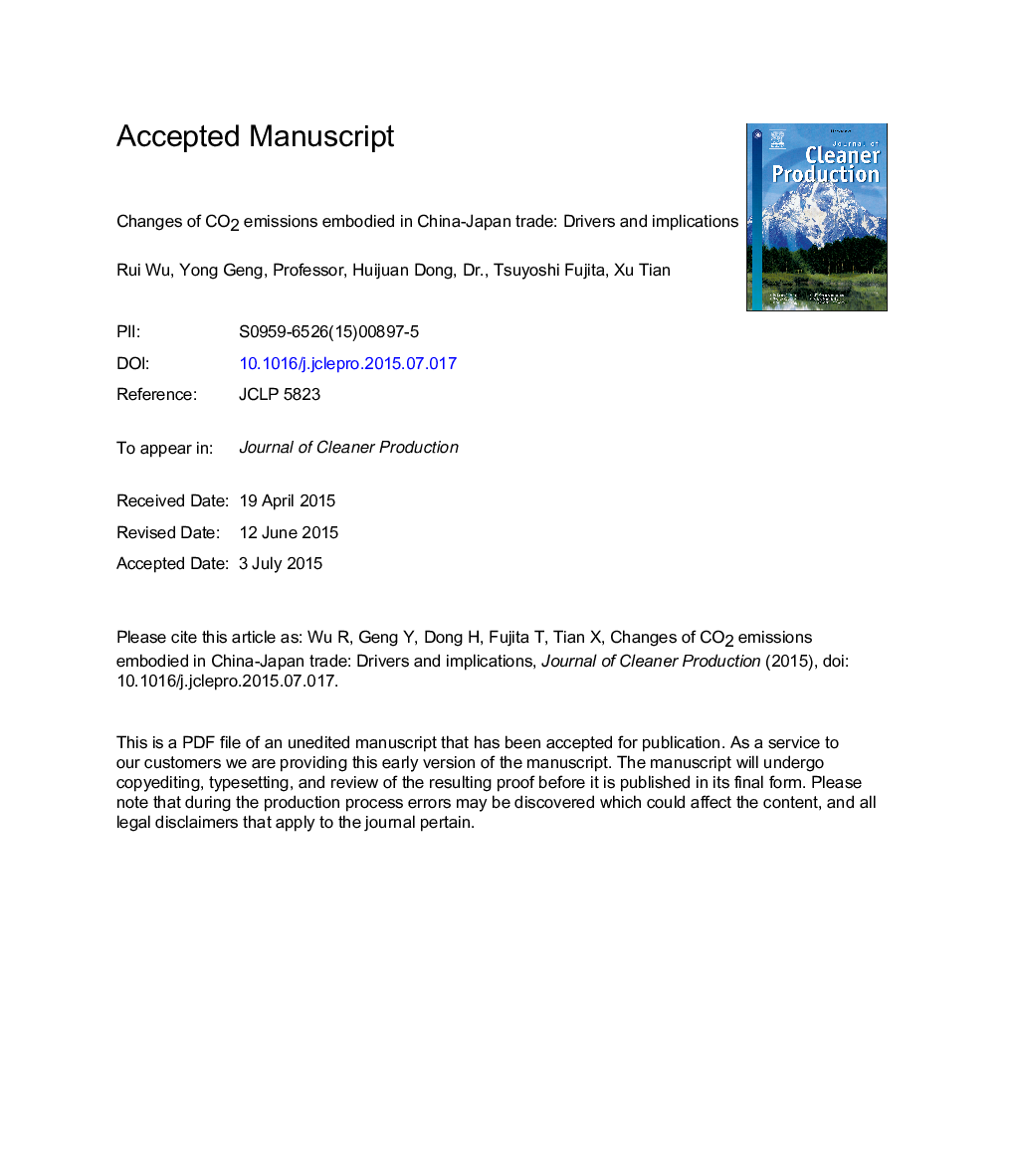| کد مقاله | کد نشریه | سال انتشار | مقاله انگلیسی | نسخه تمام متن |
|---|---|---|---|---|
| 10687958 | 1017969 | 2016 | 22 صفحه PDF | دانلود رایگان |
عنوان انگلیسی مقاله ISI
Changes of CO2 emissions embodied in China-Japan trade: drivers and implications
ترجمه فارسی عنوان
تغییرات تولید گازهای گلخانه ای در تجارت چین و ژاپن: رانندگان و پیامدهای آن
دانلود مقاله + سفارش ترجمه
دانلود مقاله ISI انگلیسی
رایگان برای ایرانیان
کلمات کلیدی
انتشار گازهای گلخانه ای، چین در تجارت ژاپن، تجزیه و تحلیل خروجی ورودی، نیروهای رانندگی،
موضوعات مرتبط
مهندسی و علوم پایه
مهندسی انرژی
انرژی های تجدید پذیر، توسعه پایدار و محیط زیست
چکیده انگلیسی
CO2 emission embodied in trade is an important aspect to respond international carbon mitigation. Half of China's emission increase was due to production of exports. In order to analyze the reason of such a rapid emission increase, embodied CO2 emission flows between China and Japan for the period of 2000-2009 were estimated in this study by using emission embodied in bilateral trade (EEBT) approach in order to raise policy implications for both countries from trade perspective. Decomposition analysis was further conducted in order to identify driving forces underlying changes during the study period. Moreover, the concept of dependence on traded CO2 was proposed for analyzing mutual dependence of China and Japan's carbon emission and economy. The results show that China was a net exporter of embodied CO2 emissions between China and Japan trade, but both China's exported emissions and net emission transfer to Japan began to decrease after 2007. More emissions were embodied in more advanced and less carbon intensive products, especially for China's exports. Driving force analysis shows that trade volume was the main driver for the increase of embodied emissions and technology effect contributed mainly to the decrease. The absolute value of technology effect was even larger than activity effect in some years. This study also reveals that Japan was relatively more dependent on China's CO2 emissions and showed an increasing trend over the last decade, while China's economic development was more dependent on imports from Japan and such a situation reversed after 2006. This study suggests that China should further reduce its emission intensity for narrowing the gap of embodied emissions between the bilateral trade flows and Japanese energy-saving technologies should be transferred to China.
ناشر
Database: Elsevier - ScienceDirect (ساینس دایرکت)
Journal: Journal of Cleaner Production - Volume 112, Part 5, 20 January 2016, Pages 4151-4158
Journal: Journal of Cleaner Production - Volume 112, Part 5, 20 January 2016, Pages 4151-4158
نویسندگان
Rui Wu, Yong Geng, Huijuan Dong, Tsuyoshi Fujita, Xu Tian,
